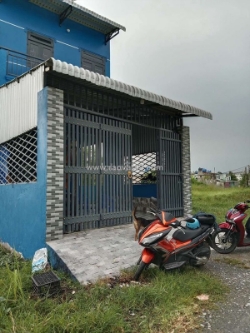Sustainability in coffee, what issues to consider?
Ngày đăng: 9/16/2024 4:36:05 PM - Đồ uống - Đắk Lắk - 40Chi tiết [Mã tin: 5551903] - Cập nhật: 10 phút trước
Sustainability in coffee has emerged as a key topic in recent years, yet it is crucial to consider the long-term economic, environmental, and social well-being of the coffee industry. Problems such as declining biodiversity and the poverty faced by many farmers highlight some of the pressing issues.
Can the coffee sector manage to provide fair wages while also maintaining environmental responsibility? Is it possible for a growing economy to remain sustainable? Continue reading to explore more about sustainability in coffee.
Understanding Sustainability in Coffee
The term “sustainability” has become increasingly prevalent, and its meaning has evolved over time. When discussing sustainability in coffee, we're focusing on what is referred to as the triple bottom line: people, planet, and profit.
Sustainable development aims to address the needs of the present without jeopardizing the ability of future generations to meet their own needs. In essence, it involves managing resources responsibly to ensure that future generations will have the necessities for a comfortable life.
The Connection Between Coffee and Sustainability
While climate change and fair coffee pricing are hot topics today, the concept of sustainability has long been present in the coffee industry. Discussions about maintaining economic stability through controlling market surplus date back to the first international coffee agreement in 1962.
Considering the full scope of sustainability in coffee can be daunting, as it involves the complex interplay between people, the environment, and profitability. Let’s hear from the experts to gain deeper insights.
Economic Foundations and Social Impact in Coffee Sustainability
Daniele Giovannucci, president of the Committee on Sustainability Assessment (COSA), emphasizes the link between economic and social sustainability in coffee. His organization, a non-profit dedicated to advancing agricultural sustainability metrics, highlights the shifting dynamics over the past few decades.
Giovannucci notes that coffee-producing countries once managed to meet basic health and educational needs while maintaining environmental balance by growing coffee as a forest understory crop. However, this is no longer the case. “Today, many communities struggle with declining incomes and more demanding production methods that require substantial investment and pose greater risks,” he explains. Adjusted for inflation, farmers’ earnings have diminished over the years.
According to Giovannucci, the central challenge for coffee farmers globally is achieving a living income from their crops. “Without a stable economic base, it’s hard to envision thriving farming communities that could support a diverse and expanding industry,” he says.
He points out that some visionary leaders view sustainability as integral to long-term profitability and run their companies accordingly. However, many large coffee firms seem focused solely on short-term gains, lacking a broader vision for sustainable success.
The Necessity of Social Sustainability in Coffee
Many coffee-producing regions grapple with severe poverty and inadequate social infrastructure, leaving producers and their families highly vulnerable in the volatile coffee market. The economic sustainability of the coffee industry is deeply intertwined with the social stability of these global communities.
Fluctuating coffee prices directly affect access to essential services such as education, housing, food, and healthcare. Geographical isolation of coffee farmers often leads to high costs for basic needs like tools or transportation, which become even more burdensome when coffee prices drop.
Gender inequality is a significant issue in the industry. The Rainforest Alliance reports that female coffee farmers produce less than their male counterparts due to limited access to resources. According to the Food and Agriculture Organization, leveling the playing field could increase women’s farm yields by 20 to 30%, potentially adding 30 billion cups of coffee annually, as estimated by the ICO.
A 2003 IISD report highlights that traditional coffee trade practices often perpetuate gender inequity by maintaining patriarchal supply chain structures. It suggests that alternative trading models could enhance gender balance throughout the supply chain. Despite being over a decade old, this report's findings remain relevant, as gender inequality persists in the coffee industry.
Child labor is another critical concern, with reports indicating widespread use of children as cherry pickers in some regions. Alex Morgan, Chief Markets Officer at Rainforest Alliance, emphasizes the need for fair wages to ensure workers can support themselves and their families. “We co-founded the Global Living Wage Coalition (GLWC) to determine the living wage required for a decent standard of living,” he explains. “This year, we merged with UTZ to create a more impactful organization, enhancing our efforts in coffee-growing regions worldwide.”
The Critical Need for Environmental Sustainability in Coffee
Environmental sustainability in coffee is an urgent global issue, with agriculture accounting for 80% of tropical deforestation and coffee farming consuming significant resources. The environmental impact extends beyond cultivation to processing and the coffee trade.
Alex highlights the environmental concerns associated with coffee wet milling, which pollutes local waterways and can harm plants, animals, and humans. The Water Footprint Network reveals that a single 125 ml cup of coffee has a global average water footprint of 140 liters. With the global population projected to reach 9.8 billion by 2050, the environmental implications of agriculture, including coffee farming, are increasingly critical.
Climate change presents new challenges for coffee farmers. Alex notes, “Climate change is particularly harsh on coffee farmers. Erratic precipitation, frequent droughts, floods, and rising temperatures pose significant threats, regardless of location.” Unpredictable weather patterns can severely affect crop quality, with heavy rains during dry seasons potentially devastating yields and incomes.
Specialty coffee is particularly vulnerable to climate change. As higher-altitude areas, which produce the highest quality coffee, become unsuitable due to rising temperatures, farmers are forced to move up the mountainsides. This migration reduces the available land for coffee cultivation, further complicating sustainability in coffee efforts.
Coffee farming generally has a negative impact on biodiversity. While farms with shade trees benefit wildlife, most coffee is grown on monoculture farms, which diminishes biodiversity. The World Economic Forum reports that intensive sun-grown coffee farms can lead to pollination and pest issues, increasing reliance on pesticides and exacerbating ecological degradation.
Coffee consumers also contribute to environmental challenges. Disposable cups and single-use coffee pods are often difficult to recycle and generate significant waste. There are efforts to introduce more sustainable options, such as a proposed latte levy and compostable cornstarch pods.
Daniele emphasizes that while improvements in packaging and energy efficiency are being pursued, the primary focus needs to be on addressing the sustainability in coffee issues at the origin of the coffee supply chain.
Achieving Sustainability in Coffee: Is It Possible?
What steps can we take to minimize our environmental footprint and promote the economic and social well-being of coffee farming communities?
Daniele emphasizes the interconnectedness of people, planet, and profit. “I am confident that addressing the economic aspects effectively can significantly improve the environmental and social challenges faced by coffee growers,” he explains. “As we learn what strategies work, we are advancing with more effective Sustainability in coffee. Achieving closer alignment with sustainability is possible if we integrate it into our profit priorities rather than treating it as separate.”
Alex believes that the coffee industry can achieve the triple bottom line. “There are numerous examples of farmers worldwide who are adopting sustainable agricultural practices, protecting the environment, ensuring good working conditions, and earning fair incomes from their certified coffees,” he notes.
He points to the Rainforest Alliance’s work with communities surrounding some of the last remaining wild coffee forests. “These forests, the origin of Arabica coffee, are threatened by deforestation. The Rainforest Alliance has collaborated with these communities and partners to offer training, technical support, and market access for these unique coffees. As a result, the local communities are practicing more sustainable farming, diversifying their incomes with honey and other crops, and benefiting from their high-quality coffees.”
While the impact of the coffee industry on global communities and the environment can seem daunting, there is hope. When choosing your coffee, consider its origin, the Sustainability in coffee of its farming methods, and explore whether you can support organizations that advocate for sustainable practices.
Tin liên quan cùng chuyên mục Đồ uống
- 0
Chính chủ cần bán tòa nhà phố tôn đức thắng 113 m2x 9 tầng mt rộng giá 70 tỷ ô
Cập nhật: vài giây trước  1
1Chính chủ cần bán nhà phố mỹ đình quận nam từ liêm 30 x 5 t nhỉnh 3 tỷ ô tô kd
Cập nhật: vài giây trước- 2
Bán nhà gần quốc lộ 13_65m2_4.7x14m_3pn_hiệp bình chánh_thủ đức_giá 5,6 tỷ
Cập nhật: vài giây trước  1
1Chính chủ cần bán nhà phố hoàng hoa thám quận ba đình 37 m2 x 3 tầng nhỉnh 7 tỷ
Cập nhật: vài giây trước 1
1Bán nhà nguyễn hữu huân, 86m2, 6 tầng, mặt tiền 4.2m, 59.5 tỷ, ngõ rộng thoáng,
Cập nhật: vài giây trước 1
1Bán nhà mặt phố chân cầm, 80m2, 72.5 tỷ, kinh doanh siêu đỉnh, phù hợp xây
Cập nhật: 1 phút trước- 2
Bán nhà gần vincom, bình thọ, thủ đức, 99m2, hẻm xe hơi chỉ 8.x tỷ, rẻ bao khu vực
Cập nhật: 1 phút trước - 2
Bán nhà mặt tiền_78m2_gần chợ hiệp bình_hiệp bình chánh_thủ đức_giá 6,8 tỷ
Cập nhật: 1 phút trước - 2
Đất gần ngã tư thủ đức_100m2_5x20m_hiệp phú_giá chỉ 3,75 tỷ
Cập nhật: 2 phút trước - 0
Chính chủ cần bán nhà phố ngọc trục đại mỗ quận nam từ liêm 35 m2 x 5 t nhỉnh 3
Cập nhật: 2 phút trước - 2
Bán nhà hẻm xe hơi lã xuân oai_long trường_thủ đức_53m2_giá chỉ 3.7 tỷ
Cập nhật: 2 phút trước  2
2Mình cần bán nhà tại ấp mới 2, xã mỹ hạnh nam, huyện đức hòa, tỉnh long an.
Cập nhật: 2 phút trước- 2
Mặt tiền kinh doanh đỉnh gần chương dương,linh chiểu, thủ đức 70m2, 2t chỉ nhỉnh 5 tỷ giảm sốc 1 tỷ
Cập nhật: 3 phút trước - 0
Chính chủ cần bán nhà quận cầu giấy phố nguyễn ngọc vũ 40 m2 x 4 t 7 tỷ ô tô
Cập nhật: 3 phút trước - 2
Mặt tiền kinh doanh ngang 7m diện tích lớn_159m2 _hiệp bình chánh_thủ đức_giá 15 tỷ
Cập nhật: 3 phút trước - 2
Bán gấp mặt tiền kinh doanh phạm văn đồng, linh đông, 90m2, 3t, ngang bề thế 5m chỉ 7 tỷ nhỉnh,
Cập nhật: 3 phút trước - 2
Bán nhà linh xuân, thủ đức 195m2, chỉ 30tr.m2, hxt, shr, ko quy hoạch, giá đầu tư
Cập nhật: 3 phút trước - 0
Chính chủ cần bán tòa nhà ccmn phố hồ tùng mậu quận cầu giấy 55m 2 x 6 t nhỉnh
Cập nhật: 3 phút trước - 0
Cực hiếm mới đập hộp chính chủ cần bán tòa nhà ccmn phố quan hoa quận cầu
Cập nhật: 4 phút trước - 2
Bán nhà gần chợ bình triệu_hiệp bình phước_thủ đức_56m2_giá chỉ nhỉnh 2 tỷ
Cập nhật: 4 phút trước - 2
Bán nhà hẻm xe hơi_sổ hồng riêng hoàn công_hiệp bình chánh_giá chỉ 3.7 tỷ
Cập nhật: 4 phút trước - 2
Bán nhà hẻm xe tải siêu hiếm đình phong phú_tăng nhơn phú b_giá chỉ nhỉnh 4 tỷ
Cập nhật: 4 phút trước  2
2Chính chủ bán nhà mặt phố nguyễn đình chiểu, 12m2, 5 tầng, mặt tiền 3.2m, 9.8
Cập nhật: 4 phút trước- 0
Cần bán nhàchính chủ quận nam từ liêm phố mỹ đình 52 m2 x 5 t 6.8 tỷ ô tô kd
Cập nhật: 5 phút trước  1
1Hiệu chỉnh ,sử dụng máy trợ thính đơn giản tại thanh hóa.
Cập nhật: 5 phút trước- 0
Chính chủ cần bán căn hộ cccc masteri tây mỗ quận nam từ liên 54 m2 4,95 tỷ tòa
Cập nhật: 5 phút trước - 2
Bán nhà quốc lộ 13 hẻm xe hơi 4 tầng _54m2_hiệp bình phước_thủ đức_giá 6,6 tỷ
Cập nhật: 5 phút trước - 0
Cần bán nhà chính chủ phố phú đô,dt;45m2x4 t,vị trí đắc địa,ô tô kd giá nhỉnh 4
Cập nhật: 5 phút trước  2
2Bán nhà lý thường kiệt, 45m2, 5 tầng, mặt tiền 5.2m, 28.3 tỷ, ngõ rộng thoáng,
Cập nhật: 5 phút trước- 0
Cần bán nhà chính chủ quận thanh xuân bán nhà phố phùng khoang 36 m3 x4 t 4.5
Cập nhật: 6 phút trước - 2
Bán đất thổ cư mặt tiền sổ hồng riêng_110m2_hiệp bình phước_thủ đức_giá 5,6 tỷ.
Cập nhật: 7 phút trước - 0
Chính chủ cần bán mảnh đất phố cầu cốc phường tây mỗ quận nam từ liêm 41m2 mt
Cập nhật: 7 phút trước  1
1Bán nhà mặt phố nhà chung, 80m2, 72.5 tỷ, kinh doanh siêu đỉnh, phù hợp xây
Cập nhật: 7 phút trước 2
2Bán khách sạn mặt phố cầu gỗ, 120m2, 7 tầng thang máy, tổng 16 phòng, 89.5 tỷ
Cập nhật: 7 phút trước 2
2Cho thuê nhà nguyên căn 2 tầng – hẻm xe hơi 6m – phù hợp làm xưởng may, kho
Cập nhật: 8 phút trước- 0
Cần bán nhàchính chủ quận nam từ liêm phố mỹ đình 52 m2 x 5 t 6.8 tỷ ô tô kd
Cập nhật: 8 phút trước - 0
Cần bán nhà chính chủ phố khuất duy tiến quận thanh xuân 40m2x5 t 6,5 tỷ ôtô
Cập nhật: 8 phút trước - 2
Bán nhà mặt tiền xe ô tô gần lê văn việt_tăng nhơn phú b_giá chỉ 6.5 tỷ.
Cập nhật: 8 phút trước - 0
Chính chủ cần bán phố đình quán quận bắc từ liêm 63 m x 4 t mt rộng nhỉnh 10 tỷ
Cập nhật: 8 phút trước  2
2Sang mặt bằng – vị trí đẹp ngay chợ vũng tàu! 163 nam kỳ khởi nghĩa
Cập nhật: 8 phút trước- 2
Siêu hot bán gấp mặt tiền kinh doanh kha vạn cân, linh đông, 1230m2, chỉ 8x tỷ, đường 16m, sầm uất
Cập nhật: 8 phút trước - 2
Bán nhà hẻm xe hơi gần trần thị diệu_phước long b_thủ đức_giá chỉ 3,95 tỷ
Cập nhật: 9 phút trước - 0
Chính chủ cần bán tòa nhà ccmn phố cầu giấy 70 m2 x 7 t mt rộng nhỉnh 10 tỷ ô
Cập nhật: 9 phút trước  1
1Bán tòa văn phòng mặt phố trần đại nghĩa, 210m2, 8 tầng 1 hầm thang máy, mặt
Cập nhật: 9 phút trước- 0
Cần bán nhà chính chủ phố đường láng quận đống đa 43 x 5 t nhỉnh 7 tỷ ô tô kd
Cập nhật: 9 phút trước - 0
Chính chủ cần bán nhà vị trí cực hiếm nhà phố cự lộc thanh xuân 35m2 x5 t 7,38
Cập nhật: 9 phút trước - 0
Vì sao có nếp nhăn dưới mắt: bí mật làn da tuổi tác
Cập nhật: 10 phút trước  2
2Chính chủ bán đất – dãy lk2 – khu dân cư an đồng, quỳnh phụ, thái bình
Cập nhật: 10 phút trước- 2
Bán nhà gần quốc lộ 13_52m2_ hẻm xe hơi _hiệp bình phước_thủ đức.
Cập nhật: 10 phút trước - 0
Chính chủ cần bán nhà phố lê quang đạo quận nam từ liêm 50 x 7 t nhỉnh 9 tỷ mt
Cập nhật: 10 phút trước













